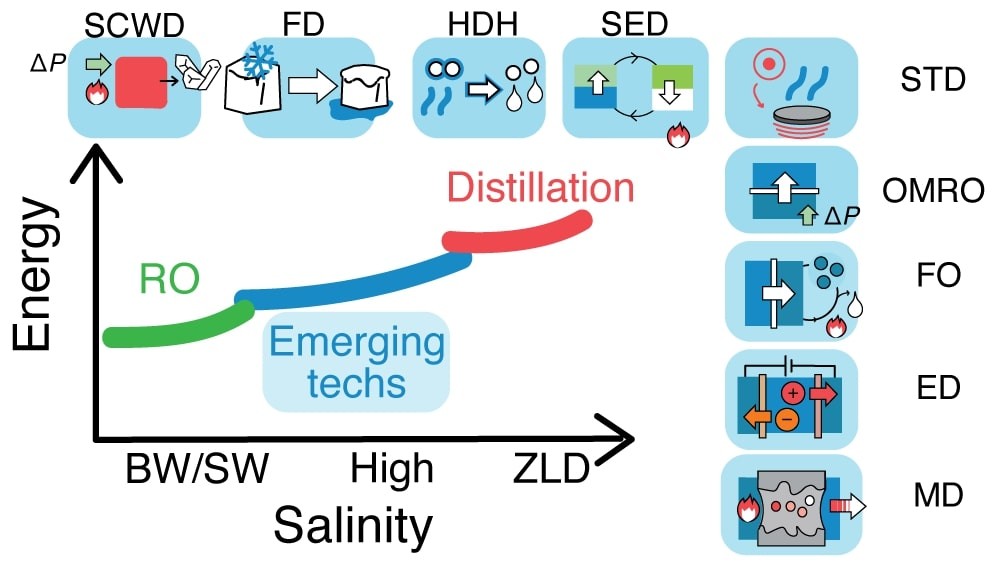Our review paper, which evaluates emerging technologies for hypersaline desalination, has been published in Desalination.
The management of hypersaline streams is a topic of growing environmental concern. In this article, we reviewed the sources and characteristics of hypersaline streams, defined as water with more than 7 wt.% dissolved solids, or approximately twice the salinity of seawater. The shortcomings of current brine management options were detailed and the drivers for desalination and zero liquid discharge as more sustainable treatment options were summarized. The governing equations for determining the minimum energy of high-salinity desalination were presented. We point out that the current energy consumption reporting practice fails to capture the grade of energy used, an important but often overlooked factor. The review underscores that mineral precipitation will be a critical phenomenon affecting essentially all hypersaline desalination techniques and highlights that fit-for-purpose water reuse offers potentially cost-competitive opportunities for hypersaline brine management. We reviewed the working principles, state-of-the-art research, prospects, and challenges of the most promising alternative technologies for high-salinity desalination, including electrodialysis, forward osmosis, membrane distillation, humidification-dehumidification, solvent extraction desalination, supercritical water desalination, freeze desalination, clathrate hydrate desalination, and solar thermal desalination. Electrodialysis and osmotically-mediated reverse osmosis can be competitive in energy efficiency but are likely to be constrained by mineral scaling at high salinities. On the other hand, thermally-driven approaches need significant advances in heat recovery to reduce energy consumption. Solvent extraction desalination, supercritical water desalination, and humidification-dehumidification can largely avoid mineral scaling issues and, thus, have an unique advantage. However, due to the wide range of hypersaline stream characteristics and end-use goals, we foresee that the market will ultimately be best served by a range of technologies.

